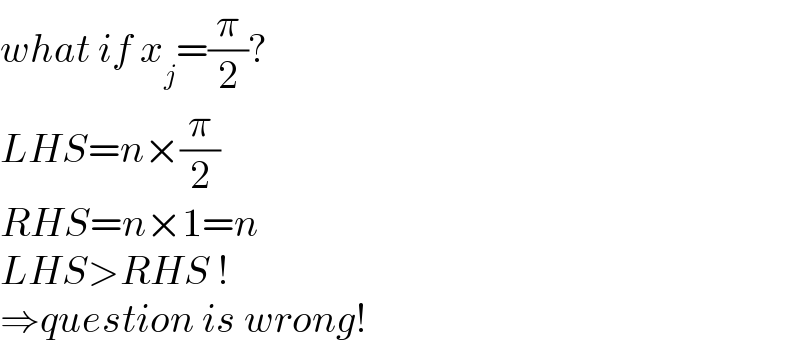
Question and Answers Forum
Question Number 181699 by Shrinava last updated on 28/Nov/22
![Prove it by mathematical induction: ∣ Σ_(j=1) ^n x_j ∣ ≤ Σ_(j=1) ^n sin x_j ; x_j ∈ [ 0 , π ]](Q181699.png)
Commented by mr W last updated on 28/Nov/22

| ||
Question and Answers Forum | ||
Question Number 181699 by Shrinava last updated on 28/Nov/22 | ||
![Prove it by mathematical induction: ∣ Σ_(j=1) ^n x_j ∣ ≤ Σ_(j=1) ^n sin x_j ; x_j ∈ [ 0 , π ]](Q181699.png) | ||
Commented by mr W last updated on 28/Nov/22 | ||
 | ||